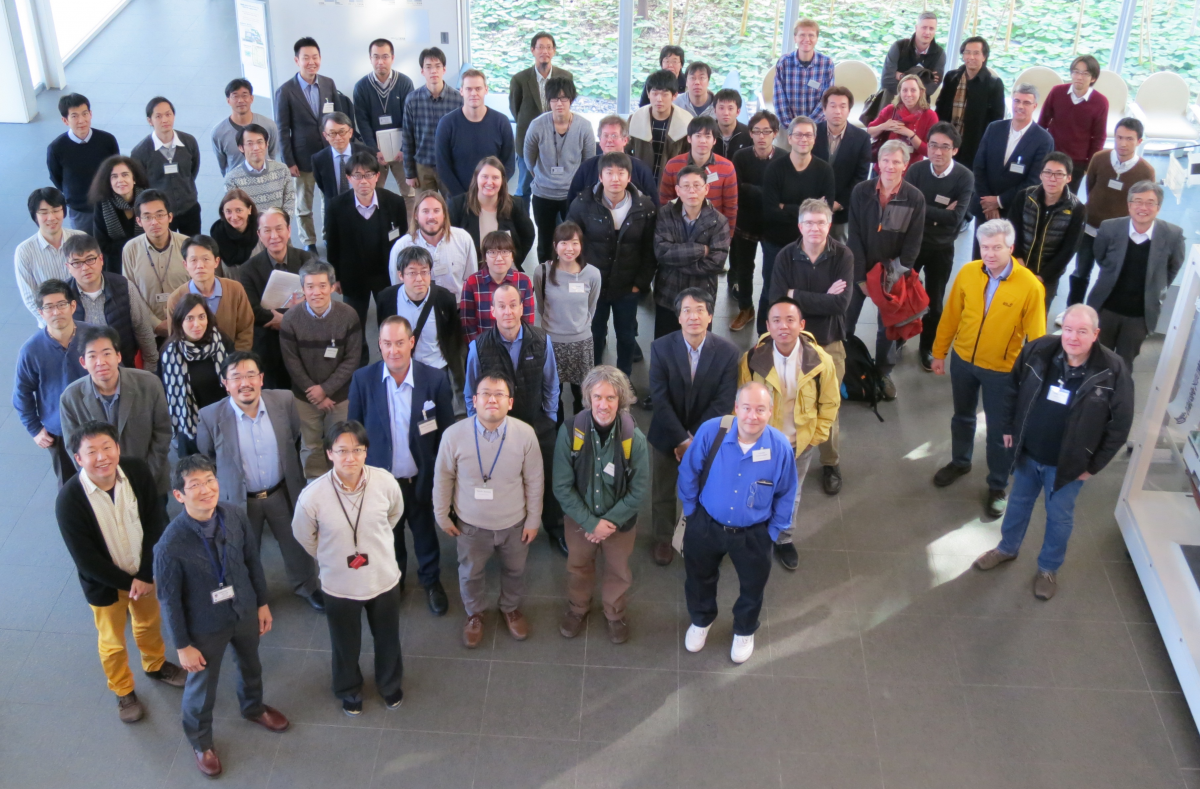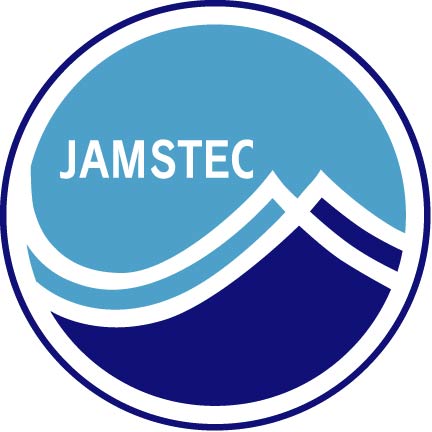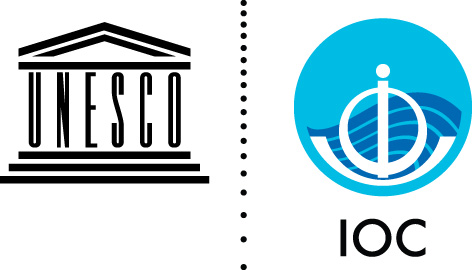CLIVAR/JAMSTEC Workshop on the Kuroshio Current and Extension System: Theory, Observations, and Ocean Climate Modelling

| Motivation | Objectives | Invited Speakers | Agenda | Posters | Abstracts | Scientific Steering Committee | Deliverables | Logistical Information | Sponsors |
The registration and abstract submission is open. There is a 7K JPY registration fee - payment in cash on site. The registration fee is waived for Early Career Scientists and scientists from developing countries (see here for more information).
The registration is closed.
The Workshop precedes the 2nd Session of OMDP - 'Extended' Meeting on Forcing Ocean-Ice Climate Models, 14-15 January 2016, Yokohama, Japan.
The workshop is hosted and organized by the Japan Agency for Marine-Earth Science and Technology (JAMSTEC) with the CLIVAR Ocean Model Development Panel (OMDP), the Climate Dynamics Panel and the Pacific Region Panel and the WESTPAC project on Air-Sea Interaction in the Kuroshio Extension and its Climate Impact (AIKEC).
Motivation
The Kuroshio, the western boundary current of the wind-driven subtropical gyre of the North Pacific Ocean, imposes profound effects on the climate and marine environment of the western North Pacific region. It transports a large amount of heat from low to middle latitudes, keeping the climate mild there. The recirculation gyre formed south of the Kuroshio and its extension current (the Kuroshio Extension) acts as a heat reservoir, whose effect is not limited to the atmospheric boundary layer but reaches the upper troposphere. A zonal band of the large meridional gradient of sea surface temperature (SST) is maintained north of the Kuroshio Extension. This SST gradient anchors the atmospheric storm track, potentially impacting the hemispheric scale atmospheric circulation. Thus, it is extremely important for climate models to properly represent the Kuroshio and its effects on the atmosphere, if they are intended to be used for understanding the role of the Kuroshio in forming the current climate and causing climate variability.
The most important roles of the Kuroshio on climate are the large northward heat transport and the formation of recirculation gyres. In order to replicate these, a horizontal resolution higher than at least around 20 km is required of the oceanic component of climate models. Thanks to the enhancement of computation resources, many climate modeling centers are planning to employ such high resolution oceanic components in some part of their CMIP6 experiments. Thus, it would be particularly useful at this time to share experiences and knowledge of modeling and understanding the behaviors of the Kuroshio in high-resolution ocean models. CLIVAR OMDP has proposed to hold this workshop in Japan, because the Japanese community has a long history of research on the Kuroshio and its impact on the atmosphere.
The Japan Agency for Marine-Earth Science and Technology (JAMSTEC) is co-sponsoring, co-organizing and hosting the workshop. One of the JAMSTEC's research objectives is to deepen our understanding of global environmental system and its changes. Kuroshio is an important science target for JAMSTEC because of its broad role in the global climate system. The strong impact of Kuroshio on the climate of Japan and the western Pacific region due to its vicinity is another motivation to study. By hosting the workshop, researchers in JAMSTEC and Japan will get an opportunity to transmit their research findings to the international research community and to develop a coherent cooperation with them.
Workshop Objectives
- To assess the state-of-science of the theory, observations, and ocean climate modelling of the Kuroshio Current and Extension systems in the North Pacific Ocean;
- To assess the role of higher resolution to improve the simulation of the Kuroshio system in ocean climate models;
- To explore opportunities for new collaborative and focused studies on the Kuroshio Current and Extension system to improve decadal climate prediction capabilities both for the Asia-Pacific region and globally.
Invited Speakers
Bo Qiu (U. Hawaii, USA)
Ichiro Yasuda - U. Tokyo, Japan
Fangli Qiao - FIO, China
Meghan Cronin - NOAA PMEL, USA
Ping Chang - Texas A&M, USA
Masao Kurogi - JAMSTEC, Japan
Tsuyoshi Wakamatsu - JAMSTEC, Japan
Hiroaki Saito - U. Tokyo, Japan
Toshio Suga - JAMSTEC, Japan
Karou Ichikawa - Kyushu Uni., Japan
Hideyuki Nakano - MRI, Japan
Justin Small - NCAR, USA
Outline Agenda
LIVE STREAMING
The meeting will be streamed live thanks to the generous support of the NOAA Modeling, Analysis, Predictions and Projections (MAPP) Program.
Information on how to connect is provided here.
DAY 1 - Tuesday 12 January 2016
8:30-9:00 Registration
Opening Session; Chair: Yoshiki Komuro (JAMSTEC)
9:00-9:05 Official Workshop Opening (Masao Fukasawa, Associate executive director, JAMSTEC)
9:05-9:10 Workshop Welcome (Yoshiki Komuro, JAMSTEC)
9:10-9:20 Workshop background and expected outcomes (Simon Marsland, CSIRO)
Session 1: Keynote Talks; Chair: Yoshiki Komuro (JAMSTEC)
9:20-9:50 Bo Qiu (University of Hawaii) Keynote speech: Decadal variability, impact, and prediction of the Kuroshio Extension system (abstract)
9:50-10:20 Ichiro Yasuda (Univ. Tokyo) Keynote speech: Variability and mixing in the Kuroshio and impact on ecosystem and climate (abstract)
10:20-10:50 BREAK
Session 2: Observation of the Kuroshio and Kuroshio extension; Chair: Xiaopei Lin (Physical Oceanography Lab, Ocean University of China)
10:50-11:20 Meghan Cronin (NOAA PMEL) - Applying diffusivity from the KEO mixed layer heat balance to determine the biological sinks of organic and inorganic carbon (abstract)
11:20-11:50 Toshio Suga (JAMSTEC) - The region around the Kuroshio Extension as a ventilator of the North Pacific pycnocline: a review (abstract)
11:50-12:20 Kaoru Ichikawa (Kyushu Univ.) - Variability of the Kuroshio in the upstream region (abstract)
12:20-12:35 Yoshinori Sasaki (Hokkaido Univ.) - Decadal variability of the Kuroshio Extension jet and its relation to coastal sea level along Japan (abstract)
12:35-12:50 Takeyoshi Nagai (Tokyo University of Marine Science and Technology) - Evidence of enhanced double-diffusive convection below the main stream of the Kuroshio Extension (abstract)
12:50-14:30 LUNCH BREAK/Poster session (at foyer, next to the auditorium)
Session 3: Ocean Dynamics in the Kuroshio and KE, including multi-scale ocean processes; Chair: Tatsuo Suzuki (JAMSTEC)
14:30-15:00 Xiaopei Lin (Physical Oceanography Lab, Ocean University of China) - The Kuroshio decadal variability and its climate impact (abstract)
15:00-15:30 Fangli Qiao (First Institute of Oceanography) - The Kuroshio and its effects on regional climate (abstract)
15:30-16:00 Hideyuki Nakano (Metrological Research Institute) - Water mass transport associated with the oceanic fronts in the northwestern Pacific Ocean (abstract)
16:00-16:15 Naoki Sato (Tokyo Gakugei University/JAMSTEC) - Contribution of sea-surface wind curl to the maintenance of the SST gradient along the upstream Kuroshio Extension in early summer (abstract)
16:15-16:45 BREAK
Session 3 (continued)
16:45-17:00 Bunmei Taguchi (Application Laboratory, JAMSTEC) - Low-frequency Variability of Upper Ocean Heat Content Associated with Meridional Shifts of the North Pacific Western Boundary Current Extensions (abstract)
17:00-17:15 Kunihiro Aoki (Department of Earth and Planetary Science, Graduate School of Science, U. Tokyo) - The momentum balance over the Kuroshio Extension (abstract)
17:15-17:30 Mio Terada (Graduate School of Science, Hokkaido Univ.) - Regional Sea Level Rise over the North western Pacific until the end of 23rd century in CMIP5 models (abstract)
17:30-18:15 Discussion - Lead: Bo Qiu (University of Hawaii)
18:30- Welcome Reception
DAY 2 - Wednesday 13 January 2016
Session 4: Development of ocean modeling: high-resolution modeling and reanalysis; Chair: Simon Marsland (CSIRO)
9:00-9:30 Masao Kurogi (JAMSTEC) - Effects of deep bottom topography on the sea surface height field in the Kuroshio Extension region studied by a nested-grid OGCM (abstract)
9:30-10:00 Tsuyoshi Wakamatsu (JAMSTEC) - Observability of long term Kuroshio variability through four dimensional ocean data assimilation (abstract)
10:00-10:15 Helene Hewitt (Met Office) - The impact of eddy resolving resolution in coupled climate models (abstract)
10:15-10:30 Simona Masina (Centro Euro-Mediterraneo sui Cambiamenti Climatici) - Analysis of the Kuroshio Extension decadal variability as simulated by an eddy-permitting model (abstract)
10 30-10:45 Eric Chassignet (Florida State University) - Impact of horizontal resolution (1/12 to 1/50 degree) on Gulf Stream separation and penetration (abstract)
10:45-11:15 BREAK
Session 5: Air-sea interaction in the Kuroshio and Kuroshio extension and its climate impact; Chair: Shoshiro Minobe (Graduate School of Science, Hokkaido Univ.)
11:15-11:45 Shoshiro Minobe (Graduate School of Science, Hokkaido Univ.) - Climate Dynamics Panel and mid-latitude ocean’s influence on the atmosphere (abstract)
11:45-12:15 Ping Chang (Texas A&M Univ.) - Ocean Mesoscale Eddy-Atmosphere (OME-A) Feedback: Kuroshio Eddies, Pacific Storm Track and Climate Variability (abstract)
12:15-12:30 Sergey Gulev (IORAS) - Cyclone activity and its interaction with the Kuroshio current system (abstract)
12:30-12:45 Niklas Schneider (University of Hawaii) - Characterization of frontal air-sea interaction by spectral transfer functions (abstract)
12:45-13:45 Lunch break/Photo session
Session 5 (continued)
13:45-14:15 Justin Small (NCAR) - Atmospheric variability associated with western boundary currents in high-resolution climate models (abstract)
14:15-14:30 Hisashi Nakamura (RCAST, Univ. Tokyo) - Impacts of frontal SST gradients in the Kuroshio-Oyashio Extension on the atmosphere as revealed in a new Japanese reanalysis, a legacy of the “hot-spot” project (abstract)
14:30-14:45 Masami Nonaka (JAMSTEC) - Dynamical response of the North Pacific Ocean to the tropical variability and its decadal modulation (abstract)
14:45-15:00 Tomoki Tozuka (Univ. Tokyo) - Role of mixed layer depth in surface frontogensis: the Kuroshio Extension front (abstract)
15:00-15:15 Stuart Bishop (North Carolina State University) - Bjerknes-like compensation in the wintertime North Pacific (abstract)
15:15-15:30 Akira Kuwano-Yoshida (JAMSTEC) - Storm track response to SST front in the northwestern Pacific region in an AGCM (abstract)
15:30-15:45 Ryusuke Masunaga (Research Center for Advanced Science and Technology, Univ. Tokyo) - Interannual modulations of mesoscale oceanic imprints on the wintertime atmospheric boundary layer under the changing dynamical regimes of the Kuroshio Extension (abstract)
15:45-16:00 Hidenori Aiki (Institute for Space-Earth Environment Research, Nagoya University) - Wind stress for ocean circulation as given by the dissipation rate of surface waves (abstract)
16:00-16:30 BREAK
Session 6: Marine ecosystems in the Kuroshio and Kuroshio extension; Chair: Ichiro Yasuda (Univ. Tokyo)
16:30-17:00 Hiroaki Saito (Atmosphere and Ocean Research Institute, Univ. Tokyo) - Kuroshio Paradox: High fisheries production in oligotrophic Kuroshio ecosystem (abstract)
17:00-17:15 Keith Rodgers (AOS Program, Princeton Univ.) - Time of Emergence for acidification and de-oxygenation in a water mass framework (abstract)
17:15-17:30 Eitarou Oka (Atmosphere and Ocean Research Institute, Univ. Tokyo) - Decadal variability of Subtropical Mode Water subduction and its impact on biogeochemistry (abstract)
17:30-18:15 Discussion - Lead: Gokhan Danabasoglu (NCAR)
18:15 Adjourn - End of Workshop
Posters
Sea surface temperature and net surface heat flux variability on seasonal and interannual time scales influenced by subsurface oceanic change in summer season - Shigeki Hosoda, JAMSTEC, Japan
Summertime upper tropospheric circulations due to diabatic heating over the North Atlantic and the North Pacific - Fumiya Inoue, Hokkaido U., Japan
Structure and Variation of Upper Ocean Salinity in the subtropical Pacific: North Pacific Tropical Water and Barrier Layer - Shota Katsura, U. Tokyo, Japan
Mesoscale variability of deep currents south of the Kuroshio Extension - Masatoshi Miyamoto, U. Tokyo, Japan
Seasonal variations of meso/submesoscale dynamics in a high-resolution simulation of the North Pacific Ocean - Hideharu Sasaki, JAMSTEC, Japan
Influence of the Gulf Stream on the hemispheric-scale coupled atmosphere-ocean-sea ice system - Nobumasa Komori, JAMSTEC, Japan
Scientific Steering Committee
Yoshiki Komuro (SSC Chair, OMDP) - JAMSTEC, Japan
Gokhan Danabasoglu (OMDP) - NCAR, USA
Simon Marsland (OMDP) - CSIRO, Australia
Shoshiro Minobe (Climate Dynamics Panel) - Hokkaido University, Japan
Tatsuo Suzuki (Pacific Region Panel) - JAMSTEC, Japan
Xiaopei Lin (Pacific Region Panel) - Ocean University of China, China
Anna Pirani (CLIVAR) - ICTP, Italy
Deliverables
A CLIVAR Exchanges Special Issue on the workshop theme will be produced for print in early Spring 2016, assembling the contributions, discussions and recommendations of the workshop.
Logistical Information
Venue: JAMSTEC, Yokohama, Japan (Directions).
The Japan Agency for Marine-Earth Science and Technology (JAMSTEC) has the main objective to contribute to the advancement of academic research in addition to the improvement of marine science and technology by proceeding the fundamental research and development on marine, and the cooperative activities on the academic research related to the Ocean for the benefit of the peace and human welfare.
Registration Fee: 7K JPY (payment in cash on-site).
The fee includes snacks for breaks, meeting organization and miscellaneos costs, and an evening reception. The fee is waived for Early Career Scientists (Those pursuing their graduated studies (MSc, PhD), post-graduates and researchers in the first 6 years (full-time equivalent) of their research activity, since gaining a post-graduate degree) and scientists coming from developing countries/emerging economies.
Accommodation: List of hotels
Visa Information: Please see here for details on which nationals require a visa to attend the workshop. Please request an invitation letter from JAMSTEC when you register to include in your visa application.
Sponsors


















